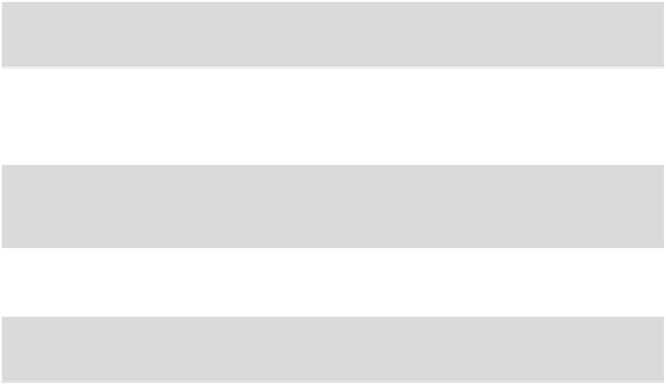Java Reference
In-Depth Information
can add and name hooks which are accessible using the JSR-226 API.
Using those hooks, any SVG graphic can be easily replaced as long as it
uses the same hook to which the Java code can attach.
The task of creating a rich and compelling UI is highly important.
Expectations of a rich and compelling user interface have recently been
raised significantly. The user experience can have a significant effect on
the sales and popularity of an application compared to other applications
that provide the same functionality.
There is a wealth of examples and online resources regarding JSR-226
SVG on the various developer program websites.
6.2.2 Geotagging
Geotagging is the process of adding geographical information, which
usually consists of latitude and longitude coordinates, to various forms
of media, such as photographic images. The uses for geotagging can
vary from finding location-based news to finding images taken near a
given location by using the coordinates in a geotagging-enabled website
(e.g., Flickr).
So let's consider an application that lets you take a picture and send it
to your Flickr account, geotagged with the location in which the picture
was taken.
The application can take a picture using JSR-135 MMAPI or JSR-234
AMMS. Initially, we need a handle to the camera player:
// get the camera player
Player camera = Manager.createPlayer("capture://video");
Then we take a snapshot using JSR-234 AMMS or JSR-135 MMAPI. In
AMMS, we use
SnapshotControl:
snapCtrl = (SnapshotControl) camera.getControl(
"javax.microedition.amms.control.camera.SnapshotControl");
snapCtrl.start(1);
In MMAPI, we use
VideoControl
:
VideoControl videoCtrl = (VideoControl) camera.getControl("VideoControl");
byte[] snapData = videoCtrl.getSnapshot("encoding=jpeg");
In such an application, the camera capabilities play a central role so
we are very likely to use some of the new controls that JSR-234 AMMS
introduced. For example, we would want to set the exposure mode of

